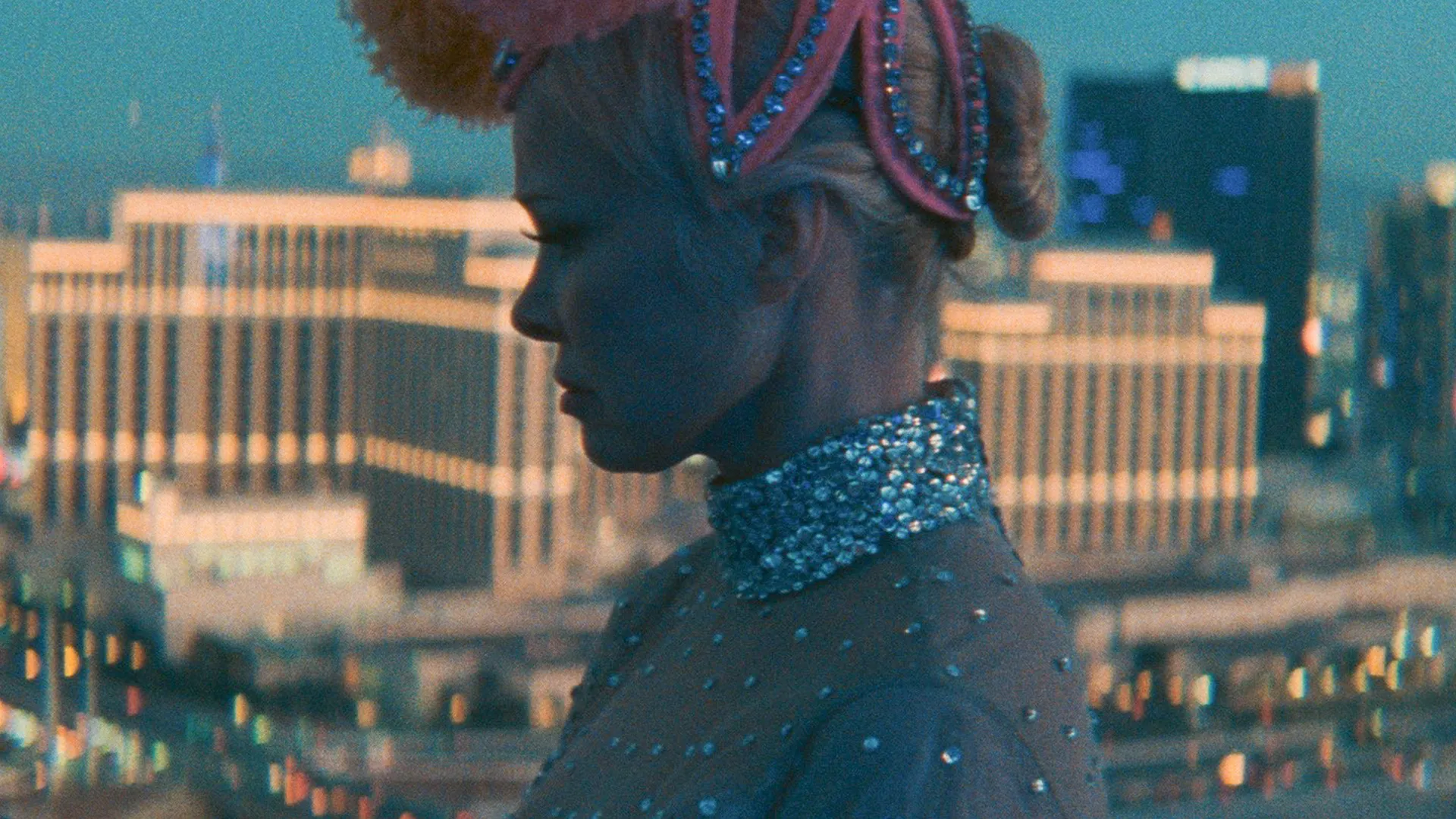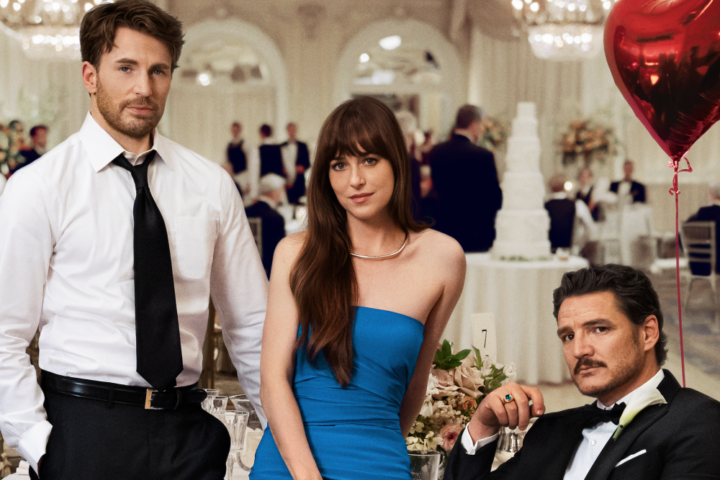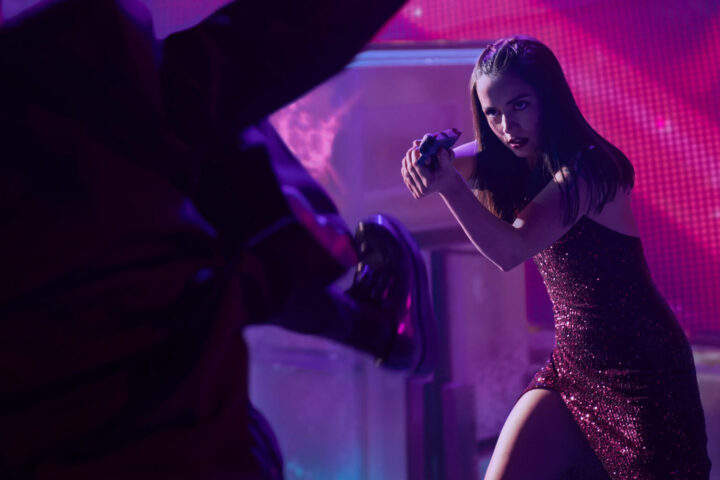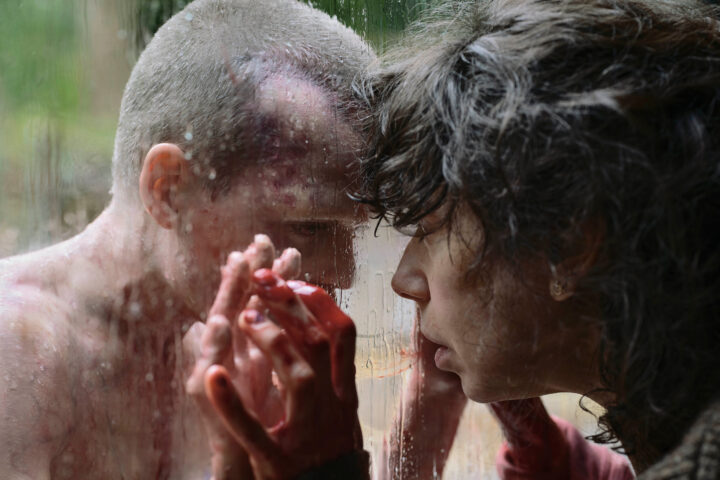In The Last Showgirl, Pamela Anderson has what feels like a late-career renewal, even if the character she plays—a Las Vegas career showgirl in a fading spotlight—sees her own options begin to dim. You can feel Anderson, in this modest character study, really showing something new, or maybe finally showing herself.
The dimming of the lights begins early in Gia Coppola’s picture, written by Kate Gersten, as Vegas strip fixture Shelly (Anderson) gets the bad news that the plug is being pulled on the long-running revue she’s headlined for more than three decades. The show, Le Razzle Dazzle, is an extravagant sort of Moulin Rouge burlesque with feathers, jewels and plenty of sparkle, and a glossy relic of a bygone era. Both Shelly, and the show, seem stuck in a more romantic time.
Once the strip’s biggest star, Shelly still believes in the magic of the production and its French-inspired artistry, and she mothers over the younger showgirls, like Jodie (Kiernan Shipka) and Marianne (Brenda Song), who care less about the art and more about the flaunt. Shelly’s best friend, Annette, a perma-tanned, still-got-it septuagenarian played with verve by Jamie Lee Curtis, is a former showgirl eking out a living waitressing in the casino, a comedown from her glory days, but a girl has got to make a living.
That living has meant a heavy price for Shelly, once a single mother struggling to balance a toddler and her passion for the stage, a dilemma that led to foster care. Daughter Hannah, well-played by Bille Lourd, has been out of the picture for years but returns to confront her pained mom over the tawdriness that eclipsed raising her.
Another fine moment finds Shelly agreeing to a dinner date with the show’s stage manager, Eddie, played by a soulful David Bautista (ever an appealing soul onscreen). With both, Shelly’s life decisions come up and she’s unwilling to re-adjudicate the past, standing up for herself and her art. The film does as well, a reminder that if women do work in an exotic industry, and are good at and proud of it, or see value in it—whether Shelly, Ani in this year’s Anora or Emma Stone in last year’s Poor Things—perhaps we should as well.
“They used to treat us like movie stars,” Shelly laments, but these days all she seems to get are judgments. While she staunchly defends the show, others are quick to dismiss. Shelly isn’t buying it: “Feeling seen and beautiful is powerful.” Yet the movie isn’t coy about what happens when that power is stripped, and the movie manages pointed commentary about the lack of a financial safety net for women of a certain age and vocation.
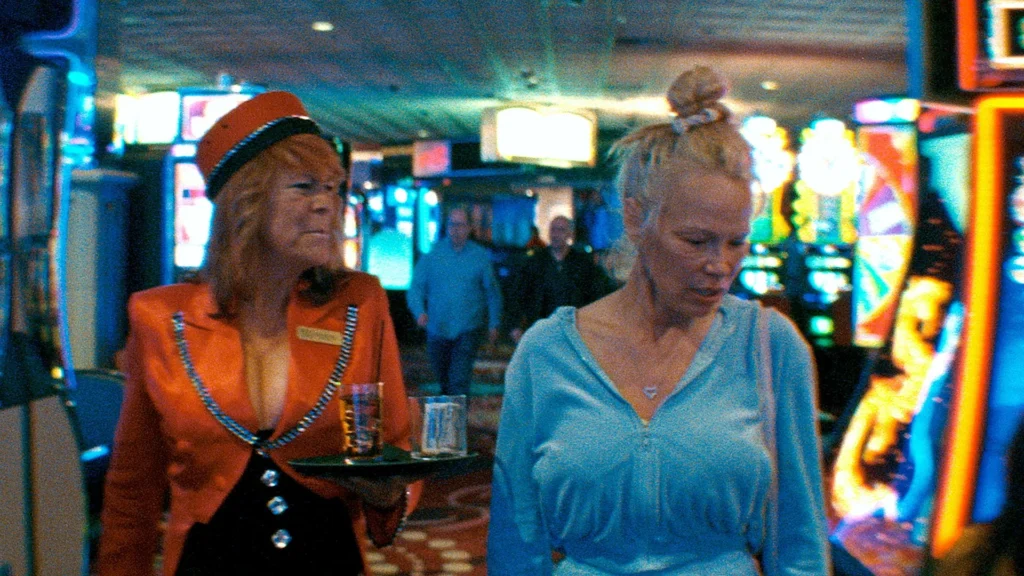
Writer Gerston has done a solid job excavating a melancholic mood lurking beneath the surface (and it’s all surface) of Las Vegas—glamour, glitz and shiny spotlights masking an intense loneliness. Gersten knows her stuff, having lived and worked with the showgirls of Vegas’ famed Jubilee!, a hot ticket for 35 years until it closed in 2016. With it went the iconic showgirl archetype, now all but erased in today’s productions. Coppola evocatively captures this underside, where livelihoods are lost in the haze of neon and one day you find yourself deep into middle age in a town that no longer has use for you.
Anderson is the reason to see The Last Showgirl, and she performs with a fragility that imbues Shelly with touching sincerity. With her high register, breathy baby doll voice (she reminds one of a delicate Marilyn Monroe), she makes Shelly an empathetic bombshell whose wings have been clipped (there’s a running motif of her oversized costume wings getting caught in the narrow hallway to the stage, until one of them breaks).
Throughout, Shelly is fundamentally optimistic, and even after a devastating blow she holds her head up. “I’m beautiful,” she tells a callously cruel director (Jason Schwartzbaum) who plays the age card. Without ever overselling, Anderson conveys an open-hearted sincerity that makes wounded bird Shelly intensely, genuinely fragile. Like her character, the star is currently reaching for artistic reinvention, famously going sans make-up and coming as she is, minus pretension. As a character defending her past while struggling toward reinvention, Anderson is appealingly hardworking in every scene.
Curtis expectedly tears into funny-sad Annette until things are no longer amusing, sinking to the bottom in a desperate public solo dance to Total Eclipse of the Heart. Like Shelly, Annette has been tossed to the wind and is a paycheck from the street, suffering the humiliation of young waitresses more desired by management and clientele. There is real potency to the notion that both Shelly and Annette are seniors without any retirement money or job options. It’s a sad vision of late life in America for single, working women of no means.
Coppola does well by Las Vegas, deploying a modest budget and mobile approach, shooting on 16mm film (notice that some of the outer frame areas are out of focus, particularly in the first half), grain and an overall grit betraying the city’s glitz. In certain moments, Shelly and Annette stand just outside the strip, enveloped in a hazy glow, aimlessly roaming concrete overpasses and byways, a few feet from the action but a world away.
All of this gives The Last Showgirl clarity about a woman taking control of her life, moving on from regrets, defending her passion and past (“I can’t imagine my life without it”) and surviving in a mean new world on the belief in herself as a good, talented person.
Recommended.
3 stars
